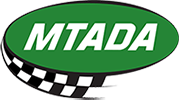Federal immigration officials just made critical changes to modernize the I-9 employment verification process. The new Form I-9 was made available for employers to use beginning August 1, and all employers must use the new form as of November 1. Here are best practices for compliance, given the new rules soon in effect.
DHS Makes Changes to the Streamlined Form I-9
The new Form I-9 has been available for dealers to use beginning August 1. However, dealers must use the new form as of November 1. The full list of DHS’s changes include:
- Reduced Sections 1 and 2 to a single-sided page by merging some fields;
- Moved the Section 1 Preparer/Translator Certification area to a separate, standalone Supplement A that employers can provide to employees if needed;
- Ensured the form can be filled out on tablets and mobile devices;
- Ensured the form can be downloaded easily and removed the requirement to enter “N/A” in certain fields;
- Revised the Lists of Acceptable Documents page to include some acceptable receipts, as well as guidance and links to information on automatic extensions of employment authorization documentation; and
- Added a box that eligible employers must check if the employee’s Form I-9 documentation was examined under a DHS-authorized alternative procedure rather than via physical examination.
DHS also reduced the length of the Form I-9 Instructions from 15 pages to eight pages and streamlined the steps each actor takes to complete their section of the form, among other changes.
Qualified E-Verify Employers May Remotely Examine Form I-9 Documents
Under current Form I-9 rules, employers are required to physically examine an employee’s original identity and work authorization documents.
DHS has now created a separate framework to authorize alternative document examination procedures as an optional alternative to the in-person physical document examination method.
The first alternative DHS authorized is an option for qualified E-Verify employers to remotely examine identity and work authorization documents beginning on August 1. Qualified E-Verify employers are those employers who are in good standing with E-Verify, have enrolled in E-Verify with respect to all hiring sites that use the alternative procedure and comply with all E-Verify requirements.
If a qualified employer chooses to offer the alternative procedure to new employees at an E-Verify hiring site, they must do so consistently for all employees at that site. However, dealers may choose to offer the alternative procedure for remote hires only and continue to apply physical examination procedures to all employees who work onsite or in a hybrid capacity, so long as they do not adopt such a practice for a discriminatory purpose or treat employees differently based on their citizenship, immigration status, or national origin.
A qualified E-Verify employer may continue to examine documents physically instead of remotely. Additionally, dealers must allow employees who are unable or unwilling to submit documentation using the alternative procedure to submit documentation for physical examination.
Requirements of the Alternative Document Review Procedure
Within three business days of an employee’s first day of employment, a qualified E-Verify employer (or an authorized representative acting on the employer’s behalf) who chooses to use the alternative procedure must:
- Examine copies (front and back, if the document is two-sided) of Form I-9 documents or an acceptable receipt to ensure that the documentation presented reasonably appears to be genuine;
- Conduct a live video interaction with the individual presenting the document(s) to ensure that the documentation reasonably appears to be genuine and related to the individual. The employee must first transmit a copy of the document(s) to the employer and then present the same document(s) during the live video interaction;
- Indicate on the Form I-9, by completing the corresponding box, that an alternative procedure was used to examine documentation to complete Section 2 or for reverification, as applicable;
- Retain a clear and legible copy of the documentation (front and back, if the documentation is two-sided); and
- Create an E-Verify case if the employee is a new hire.
DHS Provides Relief for Certain Employers Enrolled in E-Verify During COVID-19 Flexibilities
Perhaps the most significant development was the alternative solution DHS offered qualified employers who were left with the arduous task of bringing in all the employees they hired remotely during the COVID-19 pandemic to review their original documents and annotate their I-9s by the August 30 deadline.
Qualified E-Verify employers can use the alternative procedure to satisfy the required physical examination of an employee’s documents for that Form I-9 if the dealer:
- Was enrolled in E-Verify at the time they performed a remote examination of an employee’s Form I-9 documentation for Section 2 or reverification while using the COVID-19 flexibilities;
- Created an E-Verify case for that employee (except for reverification); and
- Performed the remote inspection between March 20, 2020 and July 31, 2023.
These dealers should not create a new case in E-Verify. All qualified employers that use the alternative procedure instead of physical examination as described above must follow the steps of the alternative procedure and add “alternative procedure” with the date of examination (meaning the date the employer performed a live video interaction as required under the alternative procedure) to the Section 2 Additional Information field on the Form I-9 or in Section 3, as appropriate.









